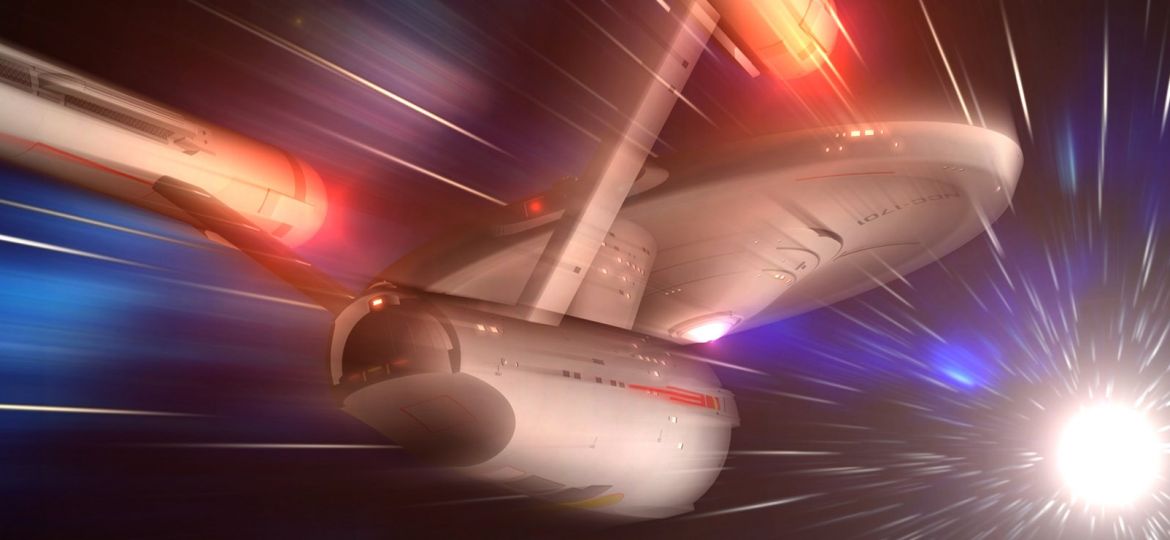
WHY THIS MATTERS IN BRIEF
Travelling at light speeds, or “Warp,” is standard fare for every sci-fi film, but now, even though there are significant technological barriers to overcome, it looks like we could achieve it…
The fun world of theoretical physics frees us all from the shackles of reality and helps set our imaginations free to ponder, and that’s why we love it.
Whether it’s exploring the possibility of warp drives or understanding the rate of the universe’s expansion – something that I’m always thinking about – we’re always often quick to explore the untapped potential of our minds and the universe around us.
Now, in a dive into the theoretical, a Norwegian professor, Espen Gaarder Haug, argues in the journal Acta Astronautica that photon rockets could reach 99.999 percent of the speed of light. Putting it another way that’s 186,000 miles per second, or 8.4 million times faster than the top speed of your Prius – I’ve heard that that’s how people on the West coast measure speed these days… And bearing in mind that deflector shields, food replicators and tractor beams are either already here, or on the horizon why shouldn’t we believe that light speed travel is attainable?
In it Haug asserts that, while humanity can’t do it anytime soon, we could potentially build a spacecraft that falls just short of the ultimate speed limit sometime in the future when the necessary technology is feasible.
Haug who’s a professor of quantitative finance at the Norwegian University School of Life Sciences believes that the math in contemporary physics isn’t too distant from the math in quantitative finance, and his background undoubtedly gives him an unconventional perspective.
In it he outlines the maths involved in developing a rocket that could take us to speeds just shy of light speed by taking cues from other projects, such as Stephen Hawking’s project that will use photons to accelerate small nano sized space craft to a fifth of light speed, and he believes that these projects could lay the foundation for his photon rocket.
While his idea may seem improbable, but then again all great breakthroughs are, even Stephen Hawking’s, his proposal stays within the limitations of the laws of natural physics, and as long as none of the fundamental particles travel faster than the speed of light, then his proposal on spacecraft speed “must also be the absolute maximum speed limit for a rocket.”
However, Haug makes it clear that we’ve a long way to go before we can develop photon rockets that can send materials or people into outer space, and while the promise of using any fuel as long as it can be converted entirely into light energy is exciting, we would need a particle accelerator magnitudes stronger than CERN, Europe’s Large Hadron Collider.
That said though, and a few years ago this too sounded improbable, it looks like we might now be closing in on the technology to put CERN, or more specifically particle accelerators, on to a chip – something I wrote about just the other week – and now, all of a sudden it’s possible, just possible, that we can see a way to create Haug’s photon engine…
If we could achieve light speed though Elon Musk’s Mars mission would be a five minute trip and never say never. Seriously – don’t say never otherwise I’ll E-Mail you an article that will change your perception of everything and make you smack yourself in the head. Have a mooch around this site and you’ll see that, as one credit card advert says, the word “impossible” is two letters too long.
By that way it’s “im” if you’re wondering… doh!
Updated: Thanks to everyone, including Espen Haug, for pointing out that my original Prius maths sucks, I originally posted that it was 3,476 times faster than a Prius when the actual number is 8.4 million. The Doh! is on me.
















